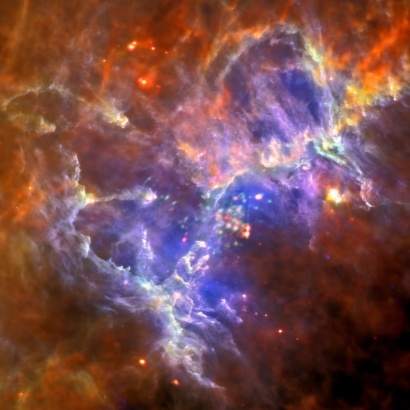The European Space Agency (ESA) has released new images of the Eagle Nebula, which is located some 6,500 light-years away in the constellation of Serpens.
The nebula contains a young hot star cluster – known as NGC6611 – that is visible with modest back-garden telescopes. It sculpts and illuminates the surrounding gas and dust, resulting in a huge hollowed-out cavity and pillars, each several light-years long.

The original Hubble image of the nebula, dubbed “Pillars of Creation,” was captured in 1995 and hinted of new stars being born within the pillars, deeply inside small clumps known as ‘evaporating gaseous globules’ or EGGs.
Because of obscuring dust, Hubble’s visible light picture was unable to see inside and prove that young stars were indeed forming.
Fortunately, the ESA Herschel Space Observatory’s new image shows the pillars and the wide field of gas and dust around them.
Captured in far-infrared wavelengths, the image allows astronomers to peer inside the pillars and structures in the region. In parallel, a new multi-energy X-ray image from ESA’s XMM-Newton telescope shows the hot young stars responsible for carving the pillars.
In visible wavelengths, the nebula shines primarily due to reflected starlight and hot gas filling the giant cavity, covering the surfaces of the pillars and other dusty structures. At near-infrared wavelengths, the dust becomes almost transparent and the pillars practically vanish.

In far-infrared, Herschel detects the cold dust and the pillars reappear, this time glowing in their own light. Intricate tendrils of dust and gas shine, providing astronomers with clues about how it interacts with strong ultraviolet light from the hot stars observed by XMM-Newton.
Previous mid-infrared images, along with the new XMM-Newton data, are leading astronomers to suspect that one of the massive, hot stars in NGC6611 may have exploded in a supernova approximately 6,000 years ago – emitting a powerful shockwave that destroyed the pillars.
However, because of the distance of the Eagle Nebula, astronomers on Earth won’t observe the event for at least several hundred years.






